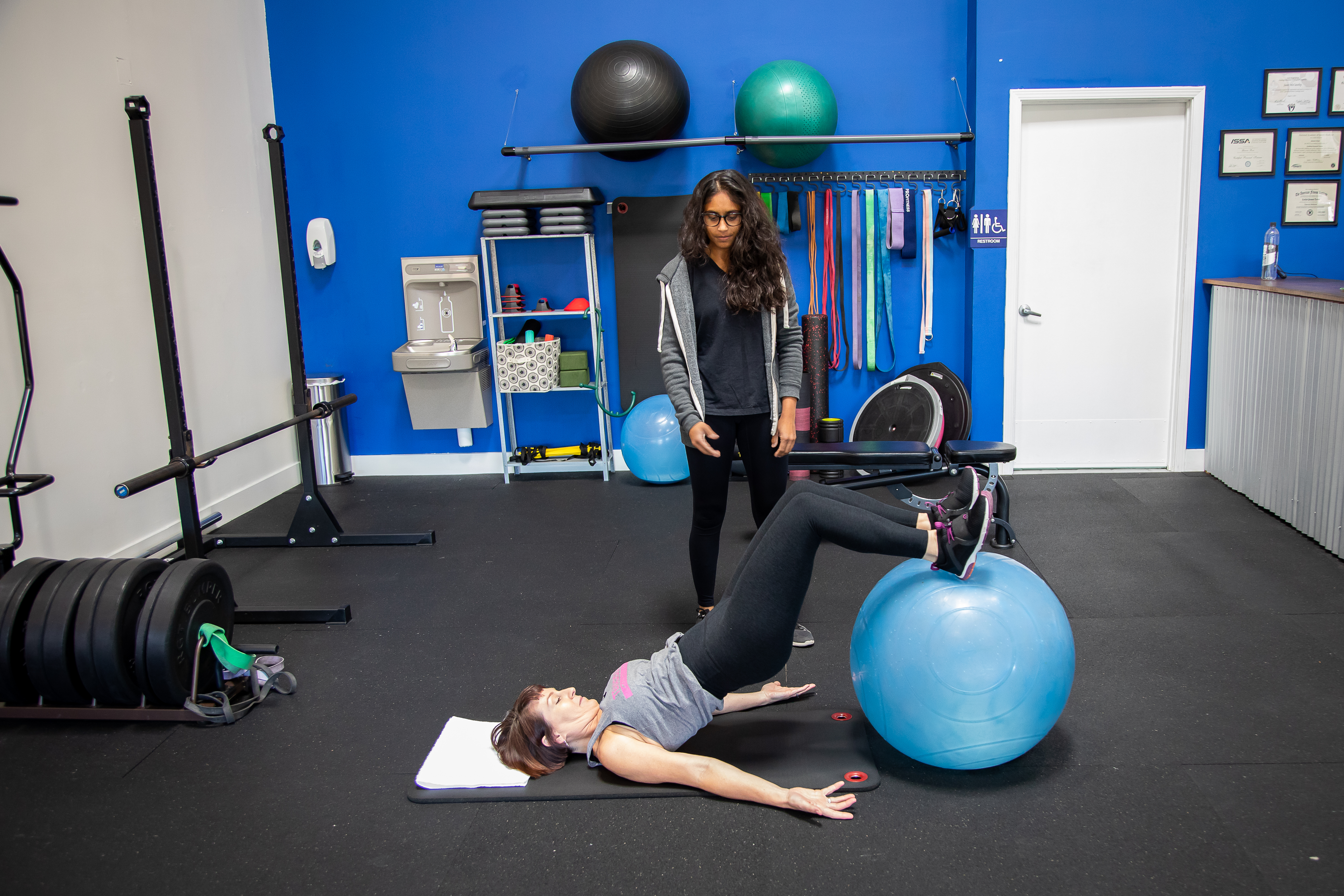Walking, getting in and out of cars, going up and down stairs, or kneeling to pick up objects are common activities in our everyday lives that our lower extremities allow us to do. However, activities that seem simple enough that someone should be able to do it with their eyes closed can be cut short by an affliction to the knee joint. The introduction of knee pain and dysfunction appears in various presentations.
As we meet with our personal training clients for their initial consultations to learn more about their goals and visions for the future, we primarily focus on the history of injury their bodies have endured. We need to know what limitations the exercise participant has due to what type of traumatic injury has occurred, the development of degenerative joint disease, or the history of corrective surgeries. If we’re going to recommend an exercise prescription to an individual to enhance strength, decrease the likelihood of future injury, and improve the overall quality of life and functionality, it’s necessary to understand where we are on the road map in relation to an individual current standpoint in their fitness journey to achieve their goals. One of the most common reports of injury appears at the knee joint. The introduction of osteoarthritis and osteoporosis, corrective surgery, or joint replacement aren’t uncommon pain points that can be improved utilizing corrective exercise tactics.
One of the most sought-after services our exercise participants seek is guidance for performing resistance training techniques. These techniques are instrumental in mitigating joint pain, increasing functional strength, rehabbing a joint injury, getting back to everyday activities following corrective surgery, or prehabbing an area to enhance the effectiveness of physical therapy and the healing process when preparing for corrective surgery. Understanding the planes of movement the knee joint is responsible for, what activities the knee contributes to everyday life functionality, and areas of weakness that can be improved upon from strengthening via exercise are crucial for implementing a lower extremity resistance training routine to enhance knee health.
The knee is a true hinge joint. Its job is to bend and extend. It can’t rotate or glide forward or backward compared to the hip or ankle joint. The knee works harmoniously with the coordinated simultaneous movements of the trunk, hip, ankle, and foot. Along with essential ligaments, tendons, blood vessels, and nerve supplies, skeletal muscular attachment points are located on the knee’s front, sides, and back. Lack of muscular size, strength, and neuromuscular coordination to the connective tissue and skeletal muscles can not only enhance the progression of degenerative bone disease but can also introduce the likelihood of future injury to occur as we age. Therefore, understanding the need to strengthen the knee joint muscles is critically important.
To start off by understating exercises that are safe, simple, and effective foundational movements, choose exercises that focus on knee flexion and extension, as well as hip adduction and abduction, and serve as foundational strengthening movements that reinforce the structural integrity of the knee. Flexion and extension are the bending and straightening of the knee joint. The muscle that brings the shin toward the back of the thigh creates flexion in the knee. The muscles of knee flexion are predominantly the hamstring muscles. Knee extension is the straightening of the leg where the shin extends out in front of the body until it is roughly perpendicular to the thigh. Quadricep muscle groups are responsible for knee extension. Both the quadriceps and the hamstrings have muscular attachment points starting from the hip that travel to the knee joint on the front and back of the knee. Therefore, strengthening these joints assist in maintaining stability not only in the straightening and bending of the knee but also as isometric anchor points akin to framing screws holding together two boards to decrease forward and backward shifting of the knee and thigh bone.
Other simple and effective muscles to focus on to reinforce knee strength are the hip adductors and abductors. The abductors originate at the hip bone and attach to the outside of the knee joint. Joint abduction means “take away from the midline” or to bring the lower extremity outward and away from the body. Hip adduction is the antithesis of abduction, where the muscles attaching from the hip’s inner part attach to the knee’s inner portion and pull the thigh inward toward the body. The abductors and adductors control the inward and outward motion of the leg and serve as critically important supporting components to mitigate medial to lateral shifting at the knee joint.
For a more in-depth description of exercises we focus on to enhance understanding of knee extension and flexion, as well as hip abduction and adduction, tune in for part two of this article on knee strength resistance training next week in the Napa Register. In the meantime, perhaps researching a few safe, simple, and effective foundational strength training tactics focusing on knee joint health could shed some light on what movements might be missing in our exercise programs. Bolstering our understanding of knee strengthening has the potential to help us live happier, healthier, and stronger lives.
Sean McCawley, the founder and owner of Napa Tenacious Fitness in Napa, CA, welcomes questions and comments. Reach him at 707-287-2727, napatenacious@gmail.com, or visit the website napatenaciousfitness.com.

